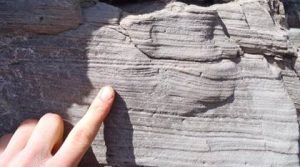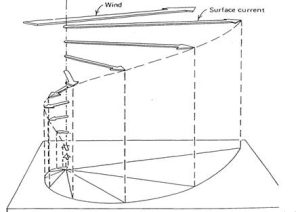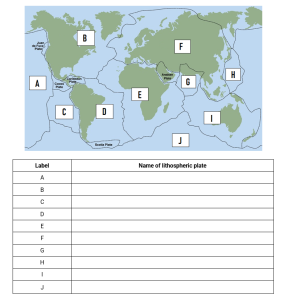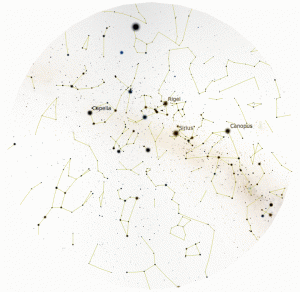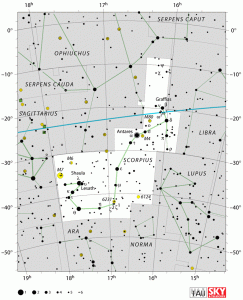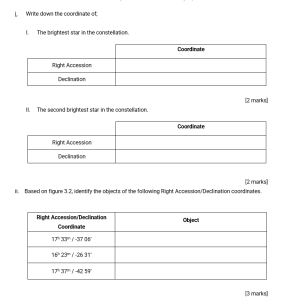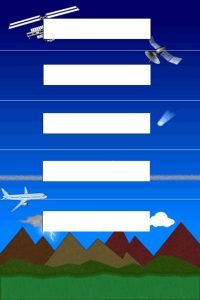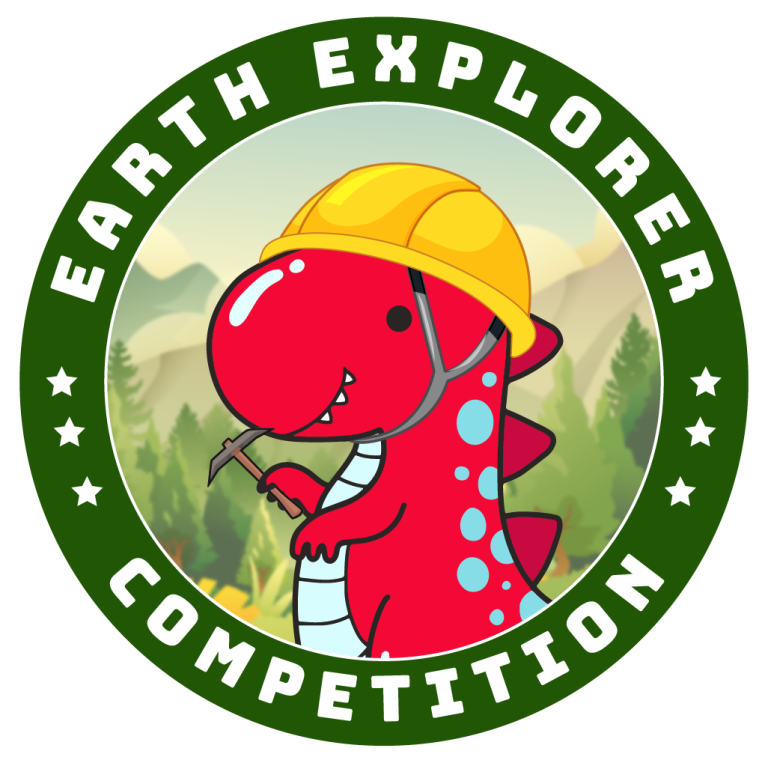sample questions
Table of Contents
Malaysian Earth Science Olympiad 2019
(PAPER 1)
Language: English
1. This Question Booklet contains 80 multiple choice questions. Answer all questions.
2. Answer using the MCQ Answer Sheet.
- Fill in and shade your student ID at the top.
- Shade ‘(R) Rescore’ below your student ID.
- Write your name in the ‘Name’ field.
- Use 2B pencils to shade your Student ID and answers.
3. It is forbidden to discuss during the test.
- Question 1-20
- Question 21-40
- Question 41-60
- Question 61-80
A. John Butler
B. Art Smith
C. Albert George
D. Alfred Weigner
E. James Hutton
A. Mid-Oceanic ridge
B. Deep focus earthquakes
C. Sea-trench
D. Volcanic activity
E. Tides
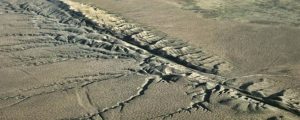
A. Divergent
B. Convergent
C. Transform
D. Intraplate
E. Interplate
A. It is too hot for animals to survive
B. They are often found in mountainous regions
C. Rocks are melted during metamorphism
D. Re-crystallization of the rock usually destroys fossils
E. Animals or plants were not existed during metamorphic rock was formed
A. Gondwanaland
B. Gaia
C. Pangea
D. Laurasia
E. Tethys
A. The lower stratum is older than the upper stratum
B. The lower stratum is younger than the upper stratum
C. The lower stratum is higher in temperature than the upper stratum
D. If there is a disturbance, the lower stratum is older than the upper stratum
E. The stratum is characterized by the fossils content
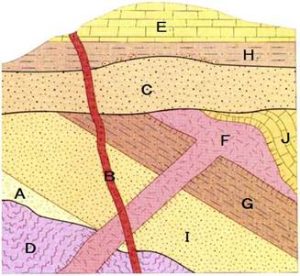
A. A→B→C→E→F→G→I→J→D→H
B. D→A→I→G→F→J→C→H→E→B
C. F→D→A→I→G→J→C→B→H→E
D. E→H→C→D→A→B→I→G→F→J
E. B→G→C→I→A→E→J→D→F→H
A. Become part of a fossil
B. Join with atoms of another element
C. Break down to form atoms of another element
D. Are exposed to chemical weathering
E. Are subjected to very high heat and pressure
A. It splits easily into thin sheets
B. It is dark in colour as heat insulator
C. It can be polished to look attractive
D. It shiny appearance is useful to reflect the heat back to the atmosphere
E. It is hard and waterproof
A. Fold plane
B. Stress plane
C. Strain plane
D. Bedding plane
E. Fault plane
A. Intensity
B. Dilatancy
C. Seismicity
D. Magnitude
E. Density
A. Location of divergent plate boundaries
B. Absolute motion of plate
C. Location of a magnetic anomalies in oceanic crust
D. Relative motion of plates
E. Location of convergent plate boundaries
A. Divergent
B. Transform
C. Convergent
D. Intraplate
E. Interplate
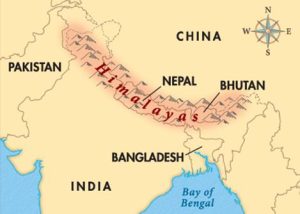
A. Continental-continental
B. Oceanic-oceanic
C. Oceanic-continental
D. Convergent
E. Divergent
I. Geographic barrier
II. Biologic barrier
III. Climatic barrier
IV. Physiographic barrier
A. I & II
B. I & III
C. II & III
D. II & IV
E. III & IV
A. The oceanic crust is the oldest adjacent to mid-ocean ridges
B. The oceanic crust is the youngest adjacent to continents
C. The oceanic crust is the oldest adjacent to continents
D. The oceanic crust is the same age everywhere
E. The oceanic crust is the youngest adjacent to mid-ocean ridges
A. New continental lithosphere is forming
B. Two plates slide past each other
C. New oceanic lithosphere is forming
D. New oceanic-continental lithosphere is forming
E. Two plates come together
A. Spreading-ridges zone
B. Mediterranean-asiatic belt
C. Rifts in continental interior
D. Circum-pacific belt
E. Volcanic belt
I. The age of the earth and all creatures on it
II. The magma and earthquake occurrences record
III. The theorized development of life on earth dating back 4.6 billion years ago
IV. The geologic history of universe
A. I & II
B. I & III
C. II & III
D. II & IV
E. III & IV
A. Part of a fault with a seismic gap
B. Precursor to an earthquake
C. Seismic sea wave
D. Particularly large and destructive earthquake
E. Formation of new oceanic lithosphere
A. Moving plates
B. Volcanism
C. Earthquakes
D. Radioactive decay
E. The sun
A. Curie point
B. Magnetic anomaly point
C. Thermal convection point
D. Hot spot point
E. Isostatic point
I. The average rock density in the mountain chain
II. The height and thickness of the mountain chain
III. The tectonic setting of the mountain chain
IV. The temperature of the rock in the mountain chain
A. I & II
B. I & III
C. II & III
D. II & IV
E. III & IV
24. The seismic discontinuity at the base of the crust is known as the
A. Transition zone
B. Magnetic reflection point
C. Low-velocity zone
D. Mohorovicic
E. Spreading-ridges zone
25. The southern part of Pangea, consisting of South America, Africa, India, Australia, and Antarctica, is called
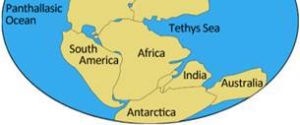
A. Laurasia
B. Gondwana
C. Panthalassa
D. Laurentia
E. Baltica
A. The location where rupture begins
B. The points on the Earth’s surface vertically above the focus
C. The same as the hypocentre
D. The location where the energy is released
E. The location of the seismograph is placed
I. Crystallised slowly
II. Cooled rapidly after erupting from a volcano
III. Formed deep underground
IV. Extrusive features
A. I & II
B. I & III
C. II & III
D. II & IV
E. III & IV
A. Capacity to reflect and refract seismic waves
B. Most destructive aspect of earthquake
C. Temperature increase with depth
D. Average rate of seismic wave velocity in the mantle
E. Absolute motion of plate
I. Anhydrite
II. Sandstone
III. Limestone
IV. Gypsum
A. I, II & III
B. I, II & IV
C. I, III & IV
D. II, III & IV
E. I, II, III & IV
A. Material moves perpendicular to the direction of wave travel
B. Earth’s surface moves as a series of waves
C. Material is expended and compressed as the wave moves through it
D. Large waves crash into a shoreline following a submarine earthquake
E. Particularly large and destructive earthquake
I. Seismicity
II. Heat
III. Pressure
IV. Radiation
A. I & II
B. I & III
C. II & III
D. III & IV
E. I & IV
I. Loading
II. Re-crystallisation
III. Cementation
IV. Compaction
A. I, II & III
B. I, II & IV
C. I, III & IV
D. II, III & IV
E. I, II, III & IV
I. Continental area
II. Oceanic area
III. Glacial area
IV. Arid area
A. I & II
B. I & III
C. II & III
D. III & IV
E. I & IV
A. Oxygen
B. Nitrogen
C. Carbon dioxide
D. Argon
E. Hydrogen
A. Because there is no oxygen in the layer.
B. Because the layer is very cold below freezing point.
C. Because the layer experience high number of meteor collisions.
D. Because the layer is too low in temperature.
E. Because of the abundant amount of ozone within the layer.
A. The duration of the rain is longer
B. Experience intense downpour
C. A broader range of rainfall
D. Might experience light snowfall
E. The air condenses into a broad area of clouds
A. Heat layer
B. Evaporation mass
C. Advection zone
D. Inversion layer
E. Atmosphere mass
A. The wind will blow from the land to the sea
B. Formation of cloud will be blown from land to sea
C. The air parcel will rise and expand
D. The duration of the rain is longer at the sea
E. All of the above
A. When they reach high saturation point
B. When all heat is release
C. When reaching curie temperature
D. When the density is optimum
E. All of the above
A. Radiation fog can only form on land, where advection fog can form on land and sea
B. Advection fog needs a surface that is already cool
C. Advection fog can last longer than radiation fog
D. The wind causes the moist air to move for advection fog to form while radiation fog forms under calm winds
E. All of the above
I. Tsunami
II. Flooding
III. Landslide
IV. Normal fault
A. I & II
B. I & III
C. II & III
D. II & IV
A. Cirrus
B. Strata
C. Cumulonimbus
D. Cyclone
E. Tornado
“A group of stars forming a recognizable pattern that is traditionally named after its apparent form or identified with a mythological figure”
A. Star clusters
B. Milky way
C. Galaxy clusters
D. Celestial sphere
E. Constellations
A. Rigel
B. Sirius
C. The Sun
D. Venus
E. Proxima centauri
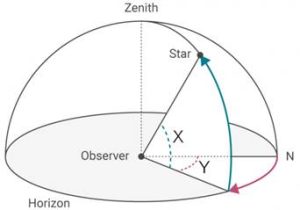
A. X : Altitude angle
B. Y : Equatorial line
C. X : Zenith angle
D. Y : Horizon
E. None of the above
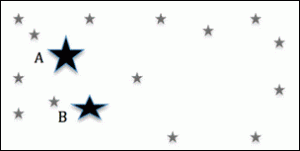
January 2017
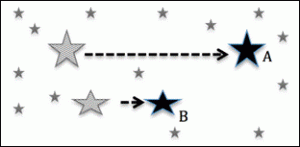
July 2017
A. Both stars are the same type stars
B. Star A is hotter than star B
C. Star A is further away from us than star B
D. Star B is further away from us than star A
E. Star A moving faster than star B
A. Kilometer (km)
B. Astronomical Unit (AU)
C. Lightyear (Ly)
D. Parsec (pc)
E. Mega-parsec (mpc)

Radio Telescope

Newtonian Telescope
A. Both operate within the optical region
B. Both focus EM wave through reflection
C. Both focus EM wave through refraction
D. The main purpose is to emit EM radiation
E. Both can detect all EM spectrum
A. 5mm Eyepiece
B. 10mm Eyepiece
C. 24mm Eyepiece
D. 40mm Eyepiece
E. None of the above
A. 730 Earth days
B. 930 Earth days
C. 1095 Earth days
D. 1277 Earth days
E. 1460 Earth days
A. Waning crescent
B. First quarter
C. Full moon
D. New moon
E. Waxing crescent
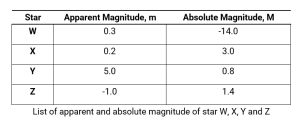
I. Star W is brighter than star Y on the night sky
II. Star Y is the brightest among them on the night sky
III. Ascending order in term of apparent magnitude: Y, W, X, Z
IV. Star X is further away than star W from the Earth
A. I & II
B. I & III
C. II & III
D. II & IV
E. III & IV
A. Vigro
B. Cygnus
C. Lyra
D. Leobra
E. Aries
55. Which of the following pair of planets and their natural satellites are CORRECT?
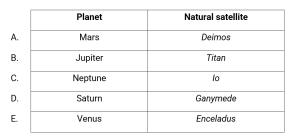
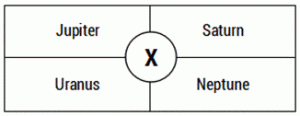
I. All of them are outer planets
II. All of them are gas giant
III. All of them have ring
IV. All of them have more than 10 natural satellites
A. I, II & III
B. I, II & IV
C. I, III & IV
D. II, III & IV
E. I, II, III & IV
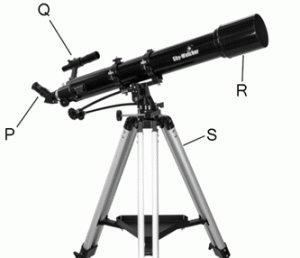
I. P : Eyepiece
II. Q : Finder scope
III. R : Telescope Tripod
IV. S : Equatorial Mount
A. I & II
B. I & III
C. II & III
D. III & IV
E. I & IV
A. Hydrogen & Carbon
B. Carbon & Oxygen
C. Nitrogen & Helium
D. Nitrogen & Oxygen
E. Helium & Hydrogen
59. The figure below shows the life cycle of the sun. The following are true describing the condition of Q, EXCEPT ![]()
I. It has expanded and engulfed probably all the inner planets
II. It might go supernova anytime
III. Change from yellowish to reddish-orange in colour
IV. Rigel is an example of star in the stage of Q
A. I & II
B. I & III
C. II & III
D. II & IV
E. I & IV
I. Cooler than the sun
II. Smaller than the sun
III. Hotter than the sun
IV. Bigger than the sun
A. I & II
B. I & III
C. II & III
D. II & IV
E. I & IV
A. Psyculiar galaxies
B. Irregular galaxies
C. Peculiar galaxies
D. Elliptical galaxies
E. Lenticular galaxies
A. Red
B. Yellow
C. Green
D. Blue
E. Violet
A. Evaporation
B. Rain
C. River inflow
D. Sedimentation
E. Heat fluxes
A. Increasing the temperature of sea water results in higher viscosity
B. Increasing the salinity of sea water results in higher surface tension
C. In an average sea water, the chloride and the sodium ions have the same concentration
D. Sea water freezes at zero degree Celcius
E. Deeper sea water has higher salinity globally
65. Which of the following comparison between fresh water and sea water is most accurate?
| Fresh water | Sea water | |
| A | Low density | High density |
| B | Freezes quickly | Freezes slowly |
| C | pH: neutral | pH: slightly alkaline |
| D | Boils early | Boils later |
| E | High refractive index | Low refractive index |
A. Secreting
B. Hunting
C. Mating
D. Camouflage
E. Communication
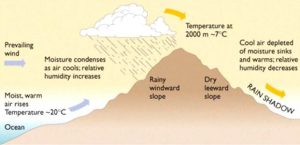
A. Conventional rain
B. Convectional rain
C. Cyclonic rain
D. Tropical rain
E. Orographic rain
A. Dam
B. Geosynthetics
C. Beach nourishment
D. Rock groyne
E. Dune stabilization
A. Around 0.015 parts per million
B. Around 0.15 parts per million
C. Around 1.50 parts per million
D. Around 15.0 parts per million
E. Around 150 parts per million
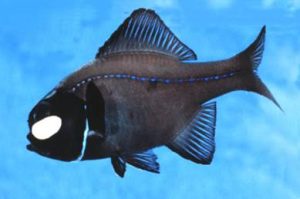
A. Halobacterium salinarium
B. Oscillatoria willei
C. Vibrio fischeri
D. Calothrix crustacea
E. Streptococcus avium
A. Ridges are relatively narrow, deep furrows with steep slopes, cutting across the continental shelf and slope, with bottoms sloping continuously downward
B. Canyons are the declivities seaward from the shelf edge into greater depth
C. Plains are very mountanious surfaces found in many deep ocean basins
D. Continental slopes are long, narrow elevations of the sea floor with steep sides and rough topography
E. Basins are deep depressions of the sea floor of more or less circular or oval form
I. Temperature
II. Salinity
III. Acidity
IV. Pressure
A. I, II & III
B. I, II & IV
C. I, III & IV
D. II, III & IV
E. I, II, III & IV
I. Cloud thickness
II. Cloud height
III. Ocean current speed
IV. Atmospheric humidity
A. I, II & III
B. I, II & IV
C. I, III & IV
D. II, III & IV
E. I, II, III & IV
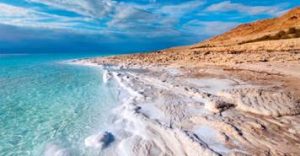
A. Dissolved rocks on land
B. Hydrothermal vents
C. Volcanic ash
D. Dust blown off the land
E. All of the above
I. The highest marine biodiversity of the Sipadan island in Sabah
II. The formation of the Mariana Trench in the Philippines
III. The formation of the Andes mountain range in South America
IV. The oldest oceanic rocks are younger than the oldest continental rocks
A. I, II & III
B. I, II & IV
C. I, III & IV
D. II, III & IV
E. I, II, III & IV
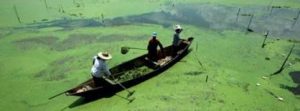
A. Blue baby syndrome
B. Food web changes
C. Biodiversity loss
D. Eutrophication
E. All of the above
I. Mediterranean Sea
II. Caribbean Sea
III. Baltic Sea
IV. Black Sea
A. I & II
B. I & III
C. II & III
D. II & IV
E. III & IV
- Algal blooms
- Redistribution by upwelling
- Excretion of aquatic and marine animals
- Performed by bacteria, archaea and eukaryotes
A. Carbon cycle
B. Oxygen cycle
C. Magnesium cycle
D. Hydrogen cycle
E. Nitrogen cycle
79. The diagram shows the Ekman spiral, where the topmost arrow indicates the direction of the wind just above the surface of the ocean, and the other arrows show how the directions of the ocean current changes with depth. What cause this spiral?
A. The existence of Ekman transport perpendicular to the wind direction
B. The increasing density of sea water with depth
C. The existence of water vortex at the seafloor
D. The frictional drag between subsequent water layers
E. The revolving of the Earth on its orbit
80. Which of the following marine features or ecosystems can be found in Malaysia?
I. Mangrove estuaries
II. Ocean trenches
III. Deep-sea reefs
IV. Coral reefs
A. I & II
B. I & IV
C. II & III
D. II & IV
E. III & IV
Malaysian Earth Science Olympiad 2019
(PAPER 2)
Language: English
1. This Question Booklet contains two parts; Part A and Part B. There are 7 structured questions in Part A and 2 essay questions in Part B. Answer all questions.
2. Use this booklet to answer both parts.
- Write your name and student ID at the top of this booklet’s front page .
3. It is forbidden to discuss during the test.
- PART A - Q1 & Q2
- PART A - Q3 & Q4
- PART A - Q5 & Q6 & Q7
- PART B
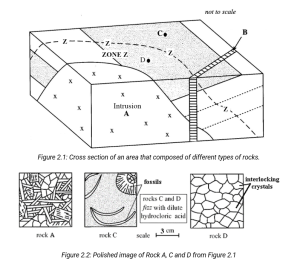
a. Complete the table below to describe the rock type and characteristics, respective to the rocks as shown in Figure 2.1 and 2.2. [6 marks]
| Rock Type | Rock Sample (A,B,C,D) | Rock Texture |
| Igneous | ||
| Crystalline with foliated grain | ||
| C |
b. Rock A was examine for further description on its characteristics.
i. By using the scale given in Figure 2.2, state either Rock A consists of coarse, medium or fine-grained size. [1 mark]
ii. Is the grain size of Rock A and B is different? Give reason for your answer. [2 marks]
iii. Give the name of Rock A. [1 mark]
iv. What is structure of Rock B? [1 mark]
c. Rock C react with fizzing reaction when a drop of hydrochloric acid is placed on it, but no reaction on Rock D.
i. State the name of Rock C and D. What is their main composition? [2 marks]
ii. Describe the process that lead to the difference between Rock C and Rock D. [1 mark]
d. What is zone Z? [1 mark]
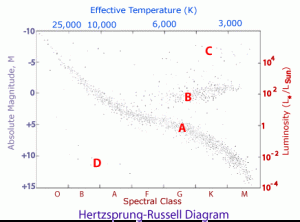
a. Name the following star classes. [4 marks]
| Zone | Star Classes |
| A | |
| B | |
| C | |
| D |
b. What is the dominant class of stars in the H-R diagram? [2 marks]
c. Circle the zone which the sun is located on the H-R diagram (Figure 4.1) above. [2 marks]
d. Based on your answer in 4(c), what is the star class for the sun? [2 marks]
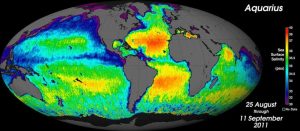
a. Sketch a graph of the surface salinity of the Atlantic Ocean against latitude. [2 marks]
b. Explain the physical reasons behind the shape of your graph in 6(a). [2 marks]
c. Describe and explain the surface salinity of the seas near the Arctic region. [3 marks]
d. Which sea has the higher surface salinity? The Arabian Sea or the Bay of Bengal? Explain your answer. [3 marks]
| 0.001% | 0.01% | 0.6% | 1.8% | 98% |
a. Match the reservoirs with their respective percentage. [3 marks]
| Reservoirs | Percentage of volume (%) |
| Atmosphere | |
| Groundwater | |
| Oceans | |
| Ice caps | |
| Lakes and rivers |
b. What will be the impact of global warming on the percentage of the reservoirs in general? Increased, decreased, unchanged, uncertain or unknown? State your arguments. [3 marks]
| Reservoirs | Impact on percentage of the reservoirs | Arguments |
| Atmosphere | ||
| Oceans | ||
| Ice caps |
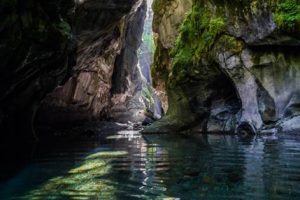
c. State the characteristic difference between the aquifers found in the in the area associated with the picture above and the other types of aquifers. [1 mark]
d. The most important chemical process for the geomorphological formation related to the picture above involve several major reactions. Write down the chemical equation of the reaction [3 marks]
i. In the rain
ii. During the percolation through the rocks:
ii. When in the open cave environment:
1. 335 million years ago, Pangea is one supercontinent and it starts to break around 175 million years ago. The theory behind this continent break is called continental drift. Name all the evidence that support this theory to this day. [10 marks]
2. Thundercloud are one of the largest and least favoured clouds. Explain the formation of thundercloud and include any picture if necessary. [20 marks]

